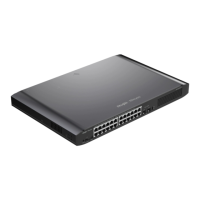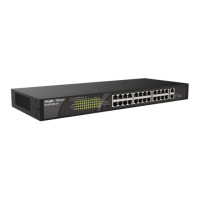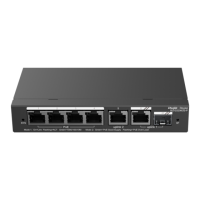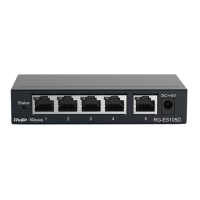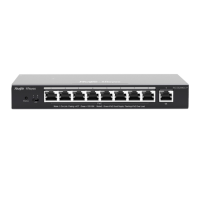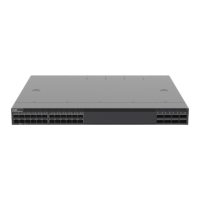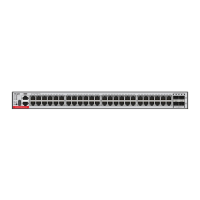Web-based Configuration Guide Advanced Configuration
130
Table 8-6 Description of the Voice VLAN Configuration Parameters on a Port
Based on different ways the Voice VLAN function is enabled on the port,
the Voice VLAN Mode can be Auto Mode or Manual Mode:
Auto Mode: In this mode, the device checks whether the permit
VLANs of a port contain the voice VLAN after the voice VLAN
function is enabled on the port. If yes, the device deletes the
voice VLAN from the permit VLANs of the port until the port
receives a voice packet containing a specified OUI. Then, the
device automatically adds the voice VLAN to the port's permit
VLANs. If the port does not receive a voice packet containing
the specified OUI within the global aging time, the device
removes the Voice VLAN from the permit VLANs of the port.
Manual Mode: If the permit VLANs of a port contains the voice
VLAN, voice packets can be transmitted in the voice VLAN.
When the security mode is enabled, only voice traffic can be transmitted in
the voice VLAN. The device checks the source MAC address in each
packet. When the source MAC address in the packet matches the voice
VLAN OUI, the packet can be transmitted in the voice VLAN. Otherwise,
the device discards the packet.
When the security mode is disabled, the source MAC addresses of packets
are not checked and all packets can be transmitted in the voice VLAN.
Caution
● The voice VLAN mode of the port can be set as the auto mode only when the VLAN mode of the port is
Trunk mode. When the voice VLAN mode of the port work in the auto mode, the port exits the voice
VLAN first and is automatically added to the voice VLAN only after receiving voice data.

